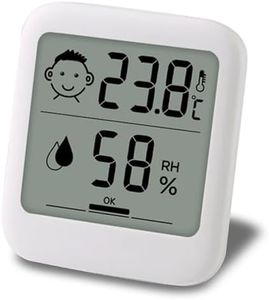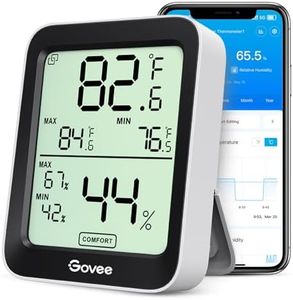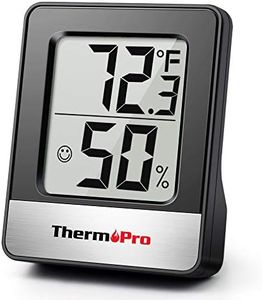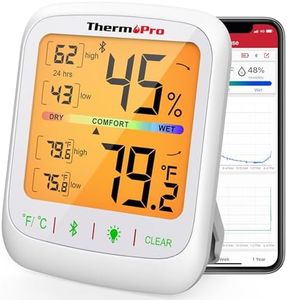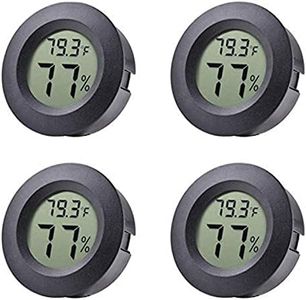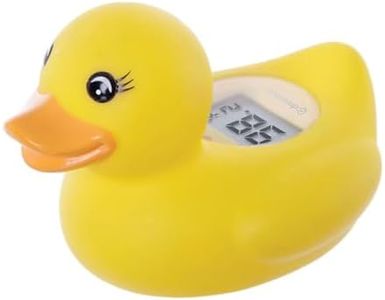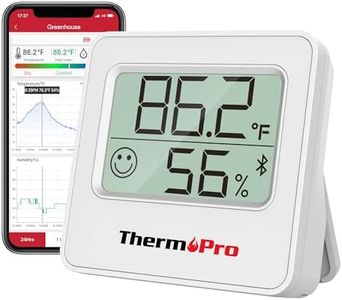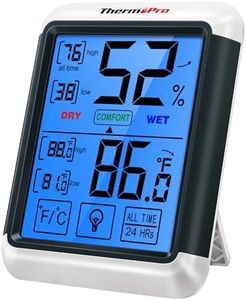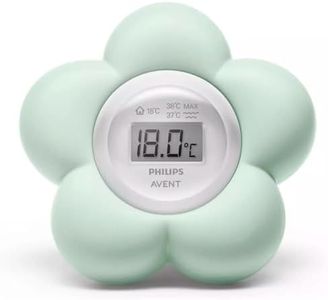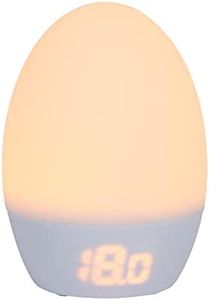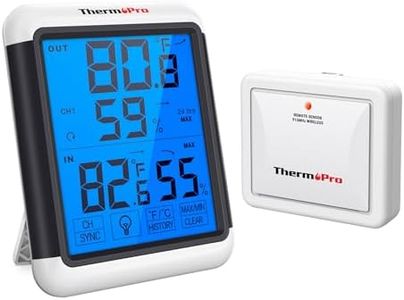We Use CookiesWe use cookies to enhance the security, performance,
functionality and for analytical and promotional activities. By continuing to browse this site you
are agreeing to our privacy policy
10 Best Room Thermometers
From leading brands and best sellers available on the web.Buying Guide for the Best Room Thermometers
When choosing a room thermometer, it's important to think about why you need to measure the temperature in your space. Some people want to monitor room comfort, others are concerned about health, or need precision for specific tasks like caring for pets or storing sensitive items. Deciding whether you need a simple, easy-to-read display or advanced features such as humidity tracking can help narrow down your options. Always consider where you'll place the thermometer to ensure it’s accurate and fits your environment.Measurement TypeThis refers to what the thermometer measures—some track only temperature, while others also measure humidity or may offer additional readings like time or weather forecasts. Temperature-only models are straightforward and work well for general monitoring. Thermometers with humidity sensing are useful if you want to maintain comfort or prevent problems like mold. Choose based on whether temperature only is enough for you or if monitoring extra conditions like humidity is important for your needs.
Display ReadabilityThis spec explains how easy it is to read the information. Displays come in analog (with needles and printed numbers) or digital (showing numbers on a screen). Analog models can be stylish and do not require batteries but might be harder to read precisely. Digital thermometers are very clear and easy to check at a glance. For people who want quick, highly visible readings, digital displays are generally best, while those who like a simple, classic look might prefer analog.
AccuracyAccuracy shows how close the thermometer readings are to the actual room temperature. Thermometers come with different accuracy levels, usually stated as plus or minus a certain degree. High accuracy is important for uses where precision matters, such as for baby rooms, medical needs, or scientific tasks. For basic comfort monitoring, a small deviation may not matter. If you care about exact temperature, look for models with a tight accuracy range, usually within ±1 degree.
Mounting OptionsThis refers to where and how you can place the thermometer—on a wall, desk, or attached to furniture. Some models offer stands, magnets, or hooks. Wall-mounting saves space and keeps it eye-level, while desk or shelf options are convenient to move. Choose based on where you want to monitor temperature and how much space you have, making sure the mounting style fits your room and preferences.
Power SourceThermometers can be powered by batteries, plug-in electricity, or work without power (mechanical/analog). Digital models usually need batteries or plug-in while analog ones don’t need power at all. If you want something maintenance-free, choose an analog option. If you prefer extra features like backlighting or data logging, a battery or electric model works better, but remember to check battery life if you don’t want to replace them often.
Additional FeaturesExtra features can include memory for minimum/maximum temperature, alerts for certain conditions, color-change displays, or smartphone connectivity. These are helpful if you want more control or need reminders, such as in nurseries or for sensitive items. If you like simple use, stick to basic models; if you want to track trends or get notifications, look for thermometers with these extras.

